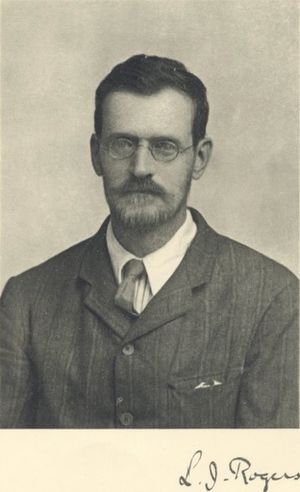Leonard James Rogers facts for kids
Leonard James Rogers (born March 30, 1862 – died September 12, 1933) was a British mathematician. He was the first person to discover some very important ideas in math, like the Rogers–Ramanujan identity and Hölder's inequality. He also created something called Rogers polynomials. Another set of math ideas, the Rogers–Szegő polynomials, are named after him.
Early Life and Learning
Leonard Rogers was born in Oxford, England. He was the second son of James Edwin Thorold Rogers and his wife Anne Reynolds. His sister was Annie Rogers.
He went to Balliol College, Oxford, which is a famous university. He earned his first degree in 1884 and a master's degree in 1887.
A Career in Mathematics
In 1885, Rogers started teaching mathematics at Wadham College, Oxford.
A few years later, in 1888, he became a Professor of Mathematics at the Yorkshire College. This college later became the University of Leeds in 1904. He worked there for many years until he retired in 1919.
Rogers studied many different areas of mathematics. He worked on complex math problems and also on special functions. He even found some math results that another famous mathematician, Ramanujan, discovered later on his own. In the late 1920s, Rogers wrote about geometry problems, including a famous puzzle called Malfatti's Problem.
Special Recognition
In 1924, Leonard Rogers was chosen to be a Fellow of the Royal Society (FRS). This is a very special honor given to top scientists in the United Kingdom.
Later Years
Leonard Rogers passed away in Oxford on September 12, 1933. He was 71 years old.


